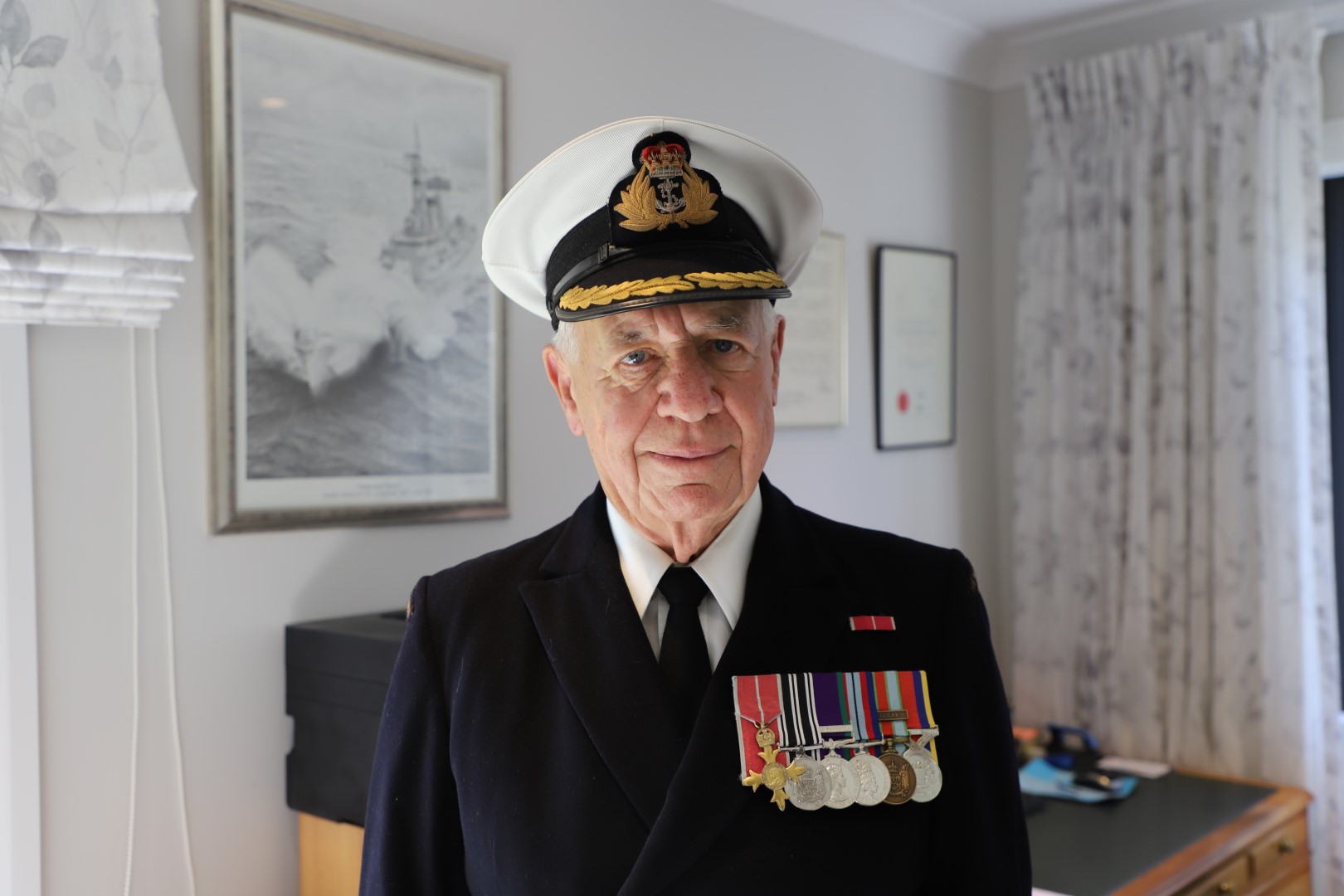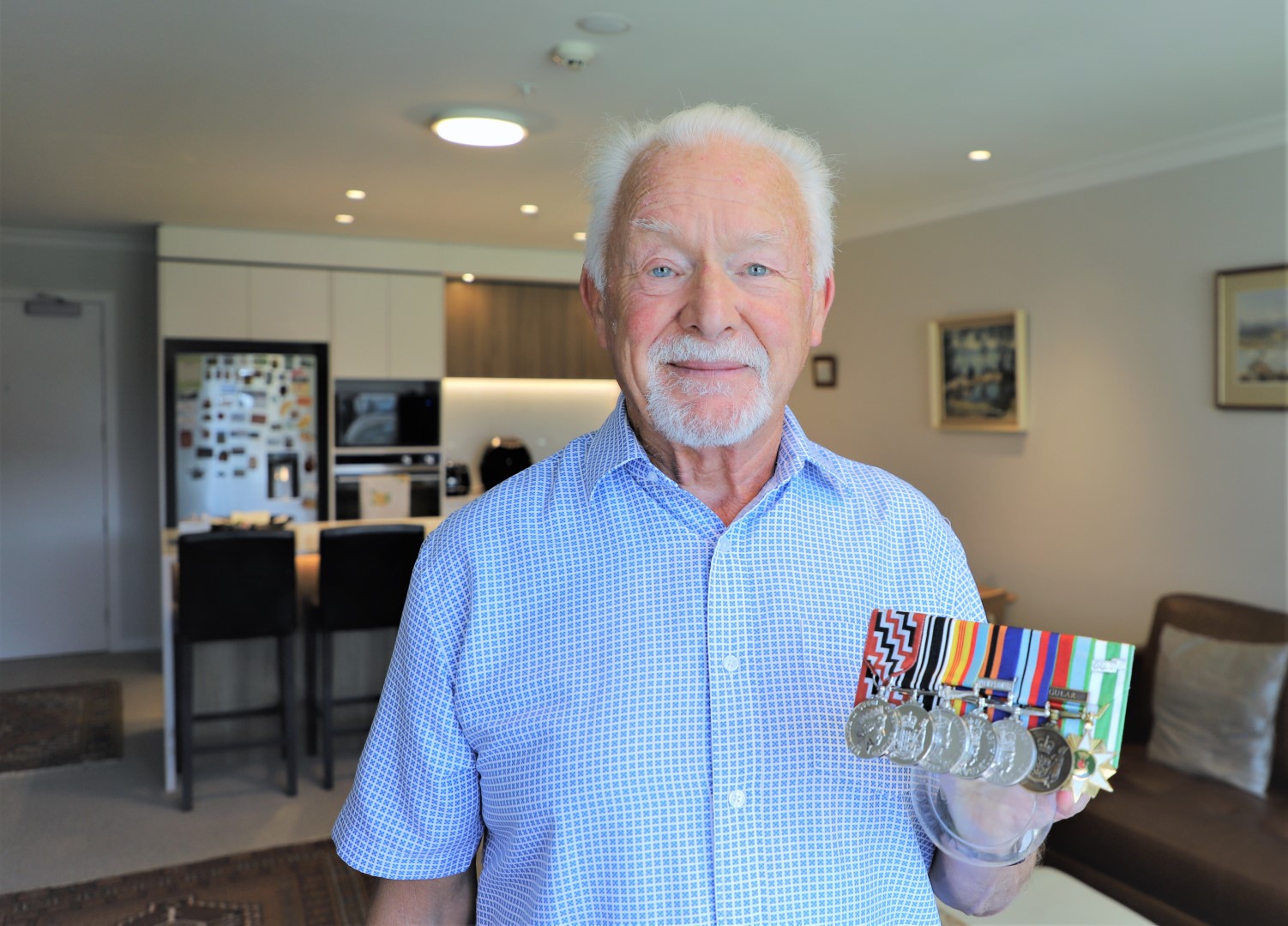The Air Vice-Marshal who was initially denied his dream to fly
The Air Vice-Marshal who was initially denied his dream to fly
%20(Large).jpg?width=1729&height=1080&name=IMG_6689%20(1)%20(Large).jpg)
Albert Edward Thomson, nicknamed Tom, grew up fascinated with aircraft.
Born on 29 November 1935 in Christchurch, the Christchurch Boys’ High School student would spend hours building model planes, dreaming of becoming a pilot in the RNZAF.
But before he could even make a start he was met with a huge stumbling block when Air Force medics told 15-year-old Tom that his eyesight wasn’t up to standard.
“That put a stopper on the whole thing,” he says. “So I signed up for the apprentice scheme for training as that looked like the nearest I would get to it.”
He spent three years at the RAF School of Technical Training in Halton, Buckinghamshire and when, as top apprentice, a cadetship came along, he was sent to Uxbridge in England where medics then told him there was nothing wrong with his eyes.
Tom went on to train as a pilot at the Royal Air Force College, Cranwell and graduated top of his intake with the Sword of Honour – an achievement his younger brother Russell went on to emulate - but he never regretted the foundation he’d had as an apprentice fitter.
“It gave me a lot of understanding of the people who were looking after the machinery I was flying.
“That may have been a factor in why I got as far as I did – I could exercise command with a soft touch.”
%20(Large).jpg?width=1633&height=1080&name=image%20(10)%20(Large).jpg)
Left: Tom (centre) graduating with the Sword of Honour with his brother Russell in attendance and right: Tom amongst the prizewinners of his course, graduating in 1958 from Royal Air Force College, Cranwell in Lincolnshire (front, centre).
His early flying career included being seconded to TEAL (the forerunner to Air New Zealand) flying to Fiji, Tahiti and Sydney, then a posting to 40 Squadron in 1961 on DC-6, and then Hastings aircraft operating to the UK, Australia, the Pacific Islands and Singapore.
In 1963, now an experienced transport aircraft captain, Tom was seconded to the US Navy squadron operating C-130 Hercules equipped with skis to and within Antarctica, an ‘interesting and challenging experience’ which involved taking off and landing in open snow.
In March 1964, while expanding his professional experience as a flying instructor, his brother was killed while flying his Canberra bomber over the South China Sea.
“With no wreckage or remains, there was nothing to be done except comfort my mother and sister at home.”
Late in 1964, Tom was posted back to 40 Squadron to fly the newly arrived RNZAF model Hercules. Thus began a busy time, training new crews, taking artillery and troops to Singapore and Vietnam, and operating to the Antarctic on top of standard tasks.
This great time in Tom’s life, which included promotion to Squadron Leader and his marriage to Barbara, came to an end with a posting to HQ staff.
Three year’s staff work was rewarded in 1971 with appointment as Commanding Officer of 42 Squadron, a prestigious job as the unit incorporated the VIP flight which carried members of the Government and official visitors including the King of Tonga and the Crown Prince of Japan.
After a stint at the RNZAF Staff College, he was appointed Commanding Officer of 40 Squadron as a Wing Commander, a return to familiar territory having served twice in junior positions.
“The tasks remained much the same save for the panicky call to evacuate our Embassy people from Saigon in April 1975,” he says.
“The late-night deployment to Singapore via a refuel at Alice Springs and two flights into Vietnam was the longest I have ever stayed awake and flown in my flying career – Saturday evening after a day at the beach until Tuesday lunchtime!”
On leaving 40 Squadron, Tom was awarded the Air Force Cross for his leadership of the unit. He spent six months studying in Canberra before being posted as Military Attache to Thailand, Burma and Laos, this time with a son and daughter in the family.
%20(Large).jpg?width=1373&height=1080&name=IMG_6686%20(1)%20(Large).jpg)
Tom with his beloved wife Barbara.
While the role included the ‘nice but tiring’ entertainment obligations on average three times a week, Tom was tracking and reporting on the changing security situation of SE Asia. Initially the opium trade in the far north tri-border area with Laos and Burma caused concern, along with insurgency in the southern and northeast of Thailand.
Later came border incursions from Kampuchea which was in the grip of the Khmer Rouge, with Thai villages attacked and 60,000 refugees pushed into eastern Thailand.
“I actually never felt my safety was under threat – you could be more under threat on the streets of Bangkok,” he says.
Tom was promoted to Group Captain in 1980 and returned to NZ to Wellington with a number of special projects to oversee, such as the $85m upgrade of the Orion aircraft by Boeing.
He was appointed an Officer of the Order of the British Empire (OBE) in 1982 and took over as CO of RNZAF base Auckland, which included Whenuapai and Hobsonville, in 1983.
Overseas postings continued, this time with a year in Canada at the National Defence College. On his return, Tom was promoted to Air Commodore and took up the post of Air Officer Commanding Support Group with responsibility for all ground and aircrew training; the Maintenance and Supply Depots, plus the bases at Wigram, Woodbourne, Shelley Bay and Te Rapa.
Another honour followed in 1988, when Tom was appointed a CBE and returned to Wellington for a promotion to Air Vice-Marshal. His role was as Deputy to the Chief of the Defence Staff.
This coincided with a time of great upheaval and change in the Defence HQ which prompted Tom’s decision to retire in early 1990 after a ‘long but satisfying’ career of nearly four decades.
by Maryvonne Gray | Apr 24, 2023
Subscribe to our blog newsletter
You May Also Like
These Related Stories

From 'boiler room tiff' to Fleet Engineer Officer

The accidental Army man

